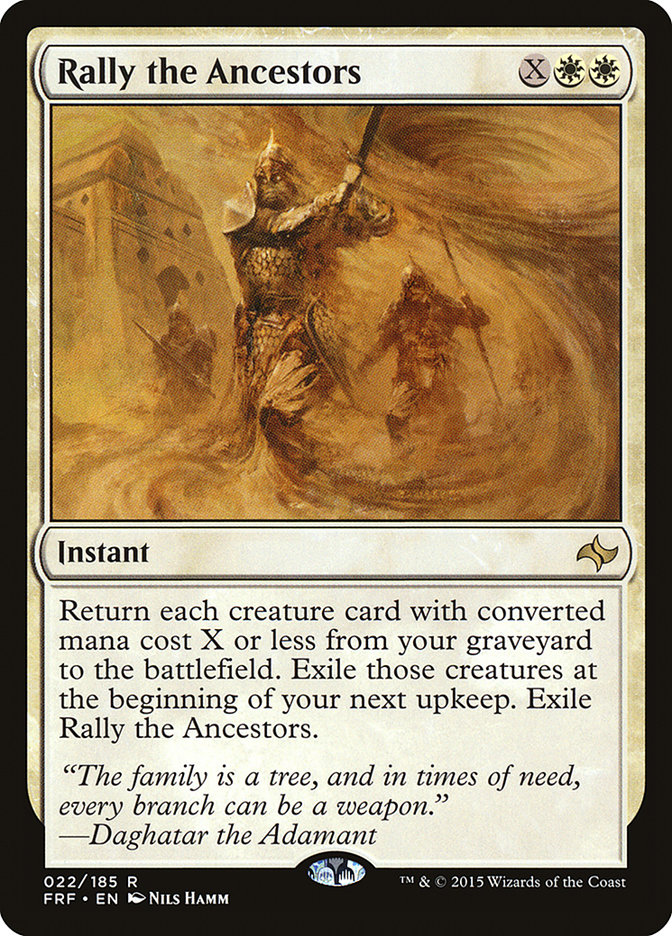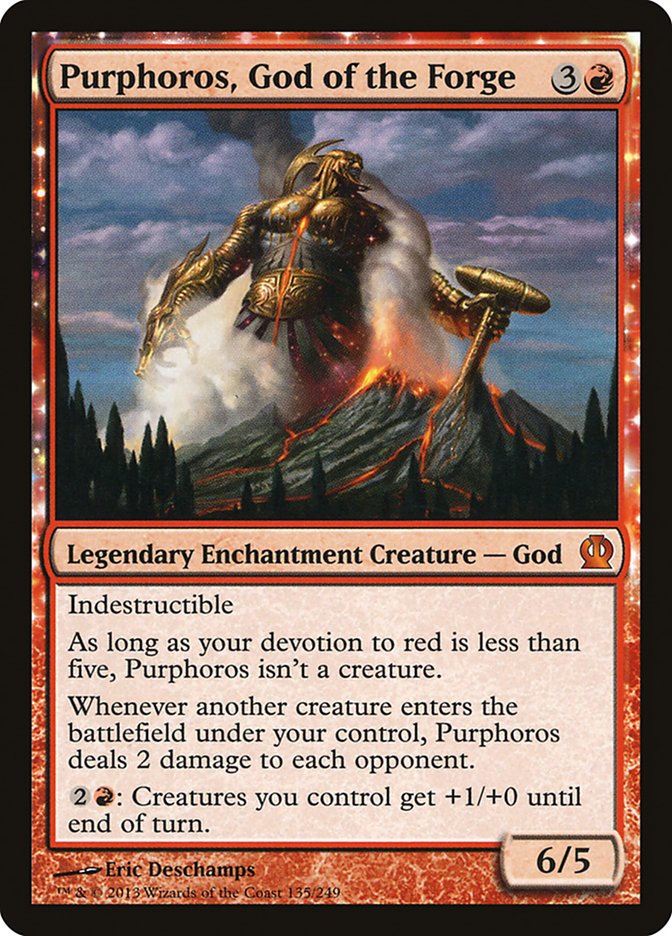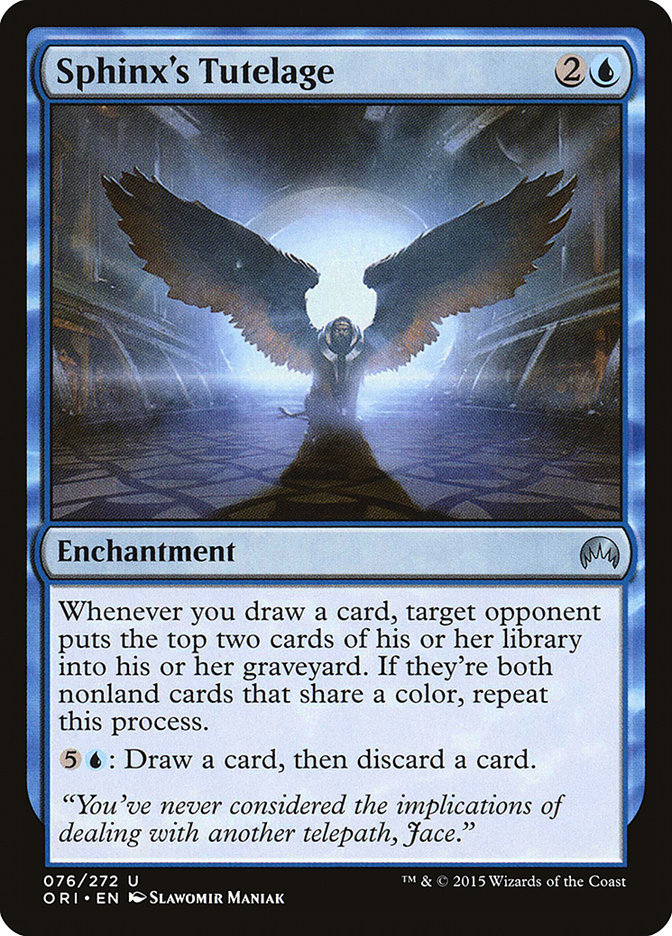It’s really no surprise what I’m writing about this week. I was participating in a draft at my local gaming store this weekend when I saw a deck title on SCG coverage that immediately had my attention.
Creatures (30)
- 4 Nantuko Husk
- 4 Elvish Mystic
- 3 Sylvan Caryatid
- 2 Mogis's Marauder
- 4 Satyr Wayfinder
- 3 Grim Haruspex
- 2 Den Protector
- 3 Deathmist Raptor
- 1 Liliana, Heretical Healer
- 4 Jace, Vryn's Prodigy
Lands (20)
Spells (10)

Not only has Matthew proved that Rally the Ancestors is the real deal and capable of competing, but he has put in a lot of the legwork for us in terms of improving the archetype and developing an optimal list. What makes this iteration particularly special is its redundancy. In the past, Rally has relied on Den Protector or Nyx Weaver to reliably acquire its namesake on time. While Matthew still utilized the former due to the potent megamorph engine with Deathmist Raptor, a new favorite of mine has entered the equation.
Jace does everything for Rally decks. It gives the deck velocity, allows you to pitch the mediocre creatures you’re interested in playing, fills your graveyard, and essentially makes your deck contain four more Rally the Ancestors by allowing you to ignite Jace’s spark and immediately flash back the powerful instant. Before, you were often forced to play far more elongated games if you simply failed to draw your Rallys or had to mill them over and use a clunky option to return them. Now you’re far more likely to be threatening turn five or six kills.
The second major innovation is changing the main kill condition to Nantuko Husk and making value Rallys incredibly powerful with the use of Grim Haruspex. Now, even if you are not able to kill your opponent with Husk + Mogis’s Marauder, you can likely draw a sizable amount of cards that will both find your next Rally (or Jace) and make sure it’s lethal.
There are some issues though. The first is that this deck is now forced to kill by attacking for damage. While it is true that some number of hasted Husks are difficult to block, weird corner cases can come up – such as against Jeff Hoogland U/W Control deck which gave Matthew his second loss or simply the fact that a removal spell can handle the Husk once it has eaten all of its friends. While in the latter scenario you certainly are likely to bury your opponent under the cards you’ve received from Haruspex, having our combo deck disrupted by an otherwise simple interaction is a strike against it.
Fixing Some Of The Problems
The most obvious solution for the “combat damage” crisis would appear to be Purphoros, God of the Forge, as seen in many older lists. Gray Merchant of Asphodel is likely too expensive for a deck designed for twenty lands and operating under the principle that it is interested in a Rally for three. The way Matthew’s deck is designed as of now, it would be simple to include Purphoros over the singular Liliana and have a back-up plan of Chording for the God, which can even occur on the back of the first value Rally.
Another hands-off card that could have applications is Sphinx’s Tutelage. While more of a sideboard card, Tutelage would be able to put a meaningful clock on control decks naturally by (at least in some small way) constricting the amount of time they have to play the game. Should your opponent ever let their shield down with Tutelage in play, Rally should be able to kill easily at instant speed with a plethora of draw triggers from Haruspex + Nantuko Husk. Granted, this is not an elegant solution, as the more non-creatures that Rally has to play, the worse the core of the deck becomes. But it goes to show that there are certainly creative solutions to these types of issues.
The final potential fix, which makes the most sense to me, is to reintroduce Siege Rhino. While I understand the desire to make the deck as lean as possible, Siege Rhino gives the deck an excellent tool for playing a fair game that constricts their ability to take chip shots and reintroduces the potential for instant-speed kills should the game drag out. It is also one of the best cards against aggressive strategies and it even has the added bonus of providing some more devotion to Mogis’s Marauder’s trigger.
Creatures (32)
- 3 Nantuko Husk
- 4 Elvish Mystic
- 3 Sylvan Caryatid
- 2 Mogis's Marauder
- 4 Satyr Wayfinder
- 4 Siege Rhino
- 3 Grim Haruspex
- 2 Den Protector
- 3 Deathmist Raptor
- 4 Jace, Vryn's Prodigy
Lands (20)
Spells (8)

I should note that shaving a Nantuko Husk appears acceptable when you are playing Siege Rhino in the deck. We are no longer quite so reliant on forcing multiple Husks through, so we can probably play fewer copies.
Assuming that I’m incorrect in my assumptions about Siege Rhino and in fact it is vitally important to adhere during deckbuilding to maximizing Rally the Ancestors for three, I think we should be playing a payoff card for that constriction.
Creatures (32)
- 4 Nantuko Husk
- 4 Elvish Mystic
- 3 Sylvan Caryatid
- 2 Mogis's Marauder
- 4 Satyr Wayfinder
- 3 Grim Haruspex
- 2 Den Protector
- 3 Deathmist Raptor
- 3 Liliana, Heretical Healer
- 4 Jace, Vryn's Prodigy
Lands (20)
Spells (8)

I’m making a few assumptions here. One is that Gather the Pack isn’t necessary if we are playing a slower but grindier game with Collected Company. While that may be true, Gather the Pack may be too explosive in the matchups where we are under pressure to cut it. I’m rather optimistic of the power potentially on display between Collected Company and the Telepath Unbound before even touching any of the nonsense Rally brings to the table, so I expect this build should work out. The final assumption is that Liliana’s power level has improved dramatically with Collected Company while also providing us with a potent disruption tool. I don’t think that I’m wrong here, but I could see an issue with the Heretical Healer clogging our hand without a Jace in play or finding her to be subpar if we lack the ability to sacrifice a creature at-will should Nantuko Husk not be present.
Regardless, we already have a creature combo shell that plays thirty creatures that cost three or less, Collected Company should be an all-star and it is definitely something worth exploring.
It might be easy to notice how eager I am to remove Chord of Calling from these decklists. It appears, at least on the surface, to easily be the weakest link in the strategy. Not only is Rally the Ancestors in spirit more of a “sum of its parts” deck rather than one that has any silver bullets to tutor for, it is also rather difficult to assemble a critical mass of creatures to cast Chord when you’re more interested in aggressively blocking and filling your graveyard. For the most part, you will only be able to use Chord effectively post-Rally, in which case the deck should largely be firing on all cylinders already.
Switching gears a bit, while it is easy to get caught up in the elegance of the Nantuko Husk + Grim Haruspex engine, and I’m not trying to downplay how powerful the interaction is, I’m still a firm believer that the big winner in Matthew’s deck is Jace. I think there are different color combinations to take a look at:
Creatures (27)
- 4 Elvish Mystic
- 3 Sylvan Caryatid
- 2 Purphoros, God of the Forge
- 4 Satyr Wayfinder
- 1 Rattleclaw Mystic
- 4 Den Protector
- 4 Deathmist Raptor
- 4 Jace, Vryn's Prodigy
- 1 Nissa, Vastwood Seer
Lands (22)
Spells (11)

This is a much slower, far more stable iteration of the Rally strategy that really feels more like a Bant Megamorph deck at its core rather than a combo deck. Without playing black, we are required to go back to the Purphoros kill – but that’s just fine as hardcasting Purphoros is definitely in this deck’s wheelhouse. After grinding our opponents out tooth and nail with our Megamorph engine and planeswalkers, as soon as they go for a trump card it’s one-shot-kill time. The issue, of course, is that our value Rallys are hardly even comparable to the Nantuko-sacrifice strategy, and that coupled with the fact that our Deathmist Raptors are much more vulnerable to exile effects may ultimately make this deck far less viable. But my point is that getting pigeon-holed into Husk + Haruspex as the only way to build our Rally decks is limiting our design space and thus our ingenuity.
By the time this goes live I will already be in Dallas, once again testing for Pro Tour Magic Origins with a squad way above my pay grade, so my musings on Standard have largely waned until the Pro Tour’s conclusion. For anyone interested for the Open Series in Richmond or the Pro Tour, I would encourage you to re-evaluate your stance towards interacting with the opponent.
With decks like G/R Devotion, W/U Heroic, and powerful Megamorph strategies dominating the tail end of both the previous Standard format, and now again in Week One, it is incredibly difficult to compete if you’re interested in being reactive. Having answers to Whisperwood Elemental, Dragonlord Atarka, Gods Willing, Den Protector, and Elspeth, Sun’s Champion just seems to be too difficult to do, and it requires that your deck’s answers line up perfectly with their threats. Instead, focus on doing something proactive yourself and simply having well-timed supplementary spells to protect your strategy. There are seemingly a multitude of viable ways to go about doing that, whether it be by tweaking an existing strategy or by choosing an outlier like Rally the Ancestors or Turbo Fog, but my point is that it is more important now than in any Standard format I can remember to be the one actively putting some kind of pressure on your opponent. As a result, I will probably be leaning towards something highly degenerate for my Constructed deck of choice in two weeks.





